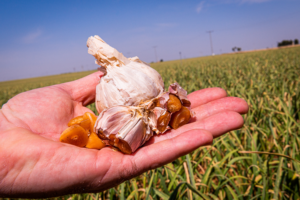
Aged garlic is a widely used functional ingredient in nutraceuticals, valued for its cardiovascular, antioxidant, and anti-inflammatory properties. These health benefits are linked to its organosulfur compounds, with S-Allyl-L-Cysteine (SAC) recognized as a key biomarker of quality and efficacy.
Guaranteeing the authenticity of aged garlic extracts depends on accurately quantifying SAC. Yet, until recently, there was no consensus on the most reliable analytical approach.
Comparative research: LC-MS vs. FIA-ESI-MS
A recent paper published in Foods evaluated two advanced methods for SAC measurement in commercial aged garlic supplements:
-
LC-MS (Liquid Chromatography–Mass Spectrometry)
-
FIA-ESI-MS (Flow Injection Analysis–Electrospray Ionization Mass Spectrometry)
The study assessed sensitivity, reproducibility, user-friendliness, and application in quality control. Results showed that both techniques are highly precise:
-
LC-MS delivered better performance in complex matrices.
-
FIA-ESI-MS excelled in speed, making it highly practical for routine production testing.

Pharmactive’s scientific contribution
The research was carried out in collaboration with leading institutions and Pharmactive’s R&D team, underscoring the company’s commitment to scientific rigor and the development of standardized, authentic botanical extracts.
Recognition by the American Botanical Council
The American Botanical Council (ABC) highlighted this study in its Botanical Adulterants Monitor, part of the international Botanical Adulterants Prevention Program (BAPP), an initiative dedicated to transparency and authenticity in the botanical and nutraceutical sector.

